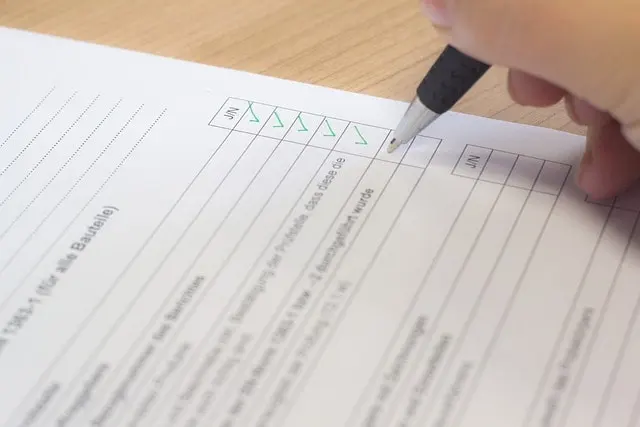Yes, you must complete a credit counseling course from an approved provider before filing for bankruptcy; failure to do so may result in your case being dismissed.
Wondering how to file for Chapter 7 bankruptcy? This guide simplifies the process. By the end, you’ll know how to assess your finances, complete essential forms, and what steps to expect along the way. Let’s get started on your path to financial relief.
It is important to understand that when you file for Chapter 13 bankruptcy you are not simply applying for a “get out of jail free” card. Instead, you will have a certain schedule to follow when it comes to repaying your debts. Below, our Chapter 13 lawyers outline some of the debts you may have and what may or may not need to be paid back.
Before starting the bankruptcy filing process, closely examine your financial situation by gathering documents like credit reports, tax returns, paycheck stubs, and bank statements. This will provide a clear picture of your debts, assets, and overall financial health.
A thorough understanding of your financial landscape helps in making informed decisions during the bankruptcy process. Since not all debts may appear on your credit report, be meticulous in your assessment. This initial step lays the foundation for the subsequent stages of filing for Chapter 7 bankruptcy.


Assessing your eligibility for Chapter 7 bankruptcy is the next step. In Georgia, household income must be below the state’s median income for your household size to pass the means test. For instance, the median income for a household of four is $68,085. If your income exceeds this threshold, a means test is required to further evaluate your eligibility.
The means test compares your income to the state median and calculates your disposable income. If your disposable income falls within a certain range, further calculations will determine your eligibility. Some groups, like disabled veterans, may be exempt from the means test. Knowing these criteria is vital for advancing your bankruptcy case.
Chapter 13 bankruptcy is like a financial reset button for those with a steady income but overwhelming debt. Understanding the bankruptcy filing process is crucial, as it involves navigating the legal framework and consulting experienced attorneys to guide you through the complexities. It’s not about wiping the slate clean like Chapter 7, but rather, it’s about reorganizing your finances while keeping your assets intact.
At the heart of Chapter 13 is the reorganization plan. Imagine it as a customized roadmap that outlines how you will pay off your debts over three to five years during your bankruptcy case. This plan is custom to fit your income and expenses, ensuring that you can manage payments without sacrificing essential needs.
The process begins with you and your attorney crafting a feasible plan. This plan is then presented to the court, where creditors have a chance to voice objections. Once approved, the plan becomes a binding agreement, protecting you from further collection actions.
Completing a credit counseling course from an approved credit counseling agency is mandatory before filing for bankruptcy. This course (around 1-hour long) helps you understand your financial situation. Also, it is available online. Failure to complete this course can result in the dismissal of your bankruptcy case.
The course typically involves reviewing your income, expenses, and debts to create a budget and explore debt relief options. Upon completion, you receive a certificate to include with your bankruptcy filing. This step ensures you are fully informed and have considered all options before proceeding.
Completing a series of forms detailing your financial situation is required for filing Chapter 7 bankruptcy, including the completed bankruptcy forms. Key documents include the Voluntary Petition, Statement of Financial Affairs, and various schedules listing your assets, liabilities, income, and expenses. Accuracy is crucial, as errors can delay the process or result in case dismissal.
Additional documents may include a Certificate of Credit Counseling, Payment Advices, and an Application to Pay Filing Fee in Installments. Provide proof of income, like recent pay stubs, and a list of creditors’ names and addresses. Properly completing these forms is crucial for a smooth bankruptcy process.
The filing fee for Chapter 7 bankruptcy is $338, payable when you file your bankruptcy petition. If you cannot afford the fee, you can request to pay it in installments or apply for a fee waiver.
Ensuring the fee is paid or arrangements are made is crucial for your bankruptcy case to proceed.
After completing all necessary forms and gathering your financial documents, file your petition with the bankruptcy court. Submit your completed forms at the clerk’s office along with the filing fee or a request for a fee waiver. The court will assign a case number upon filing, essential for tracking your bankruptcy status.
Filing triggers an automatic stay, halting all collection activities against you and providing immediate relief from debt collectors. This protection remains throughout your bankruptcy case, giving you the breathing room needed to navigate the process.
After filing your petition, submit additional financial documents to the bankruptcy trustee. These documents include bank statements, paycheck stubs, profit and loss statements, and tax returns. Provide a copy of your latest federal tax return at least seven days before the 341 meeting.
Failure to submit the required documents to the trustee can result in not receiving a discharge of your debts. The trustee may request additional documents if the initial submissions are insufficient or unclear.
Timely and accurate submission of these documents is critical to the success of your bankruptcy case.
The 341 meeting of creditors, or the creditors’ meeting, typically occurs about a month after filing for bankruptcy. During this meeting, the trustee verifies your identity and asks questions about your financial situation under oath. The meeting usually lasts less than five minutes but is a crucial step in the bankruptcy process.
In Georgia, the 341 meeting may be conducted virtually via ZOOM. Bring a government-issued ID and your social security card. Additionally, ensure to have recent financial documents for the meeting. Failure to provide identification or required documents may result in the meeting being extended to another day.
To receive a discharge of your debts, complete a debtor education course after filing for bankruptcy. This course teaches budgeting techniques and effective personal financial management. It can be completed online or in person through approved organizations.
Upon completing the course, submit your education certificate to the court. This final step ensures you have the tools and knowledge to manage your finances responsibly post-bankruptcy.
Receiving a bankruptcy discharge is the final step in the Chapter 7 process. Once the court grants a discharge, it permanently prohibits any collection activity on discharged debts, meaning you are no longer legally obligated to repay them under bankruptcy law, providing a fresh start.
A discharge order releases personal liability for most debts and prevents creditors from contacting you. After the discharge, qualifying debts are wiped out, allowing you to begin rebuilding your financial future.

Filing for Chapter 7 bankruptcy can be a complex but life-changing process. By following the steps outlined in this guide, you can navigate the bankruptcy process with confidence and clarity. From assessing your financial situation to receiving your discharge, each step is crucial for ensuring a successful bankruptcy case.
Remember, bankruptcy is not the end but a new beginning. It provides a fresh start and an opportunity to rebuild your financial life. With the right knowledge and preparation, you can overcome your financial challenges and move towards a brighter future.
To start a Chapter 7 bankruptcy, you must file a petition with the bankruptcy court in your local area after completing pre-bankruptcy credit counseling and consulting with an attorney. It is essential to prepare the necessary forms and attend the required meetings to proceed effectively.
The means test for Chapter 7 bankruptcy qualifies your eligibility by comparing your household income (meaning the combined income of all household members, even if not all household members are filing) to the state median and assessing your household disposable income. If your income is below the median, you may qualify for Chapter 7 bankruptcy.
Not all debts can be discharged in Chapter 7 bankruptcy; while unsecured debts like credit card bills and medical expenses are usually dischargeable, some “priority” obligations such as child support, alimony, most tax debts and most student loans remain intact.
The purpose of the 341 meeting of creditors is to allow the bankruptcy trustee to verify your identity and ask questions regarding your financial situation under oath, serving as a critical step in the bankruptcy process.
Yes, you must complete a credit counseling course from an approved provider before filing for bankruptcy; failure to do so may result in your case being dismissed.